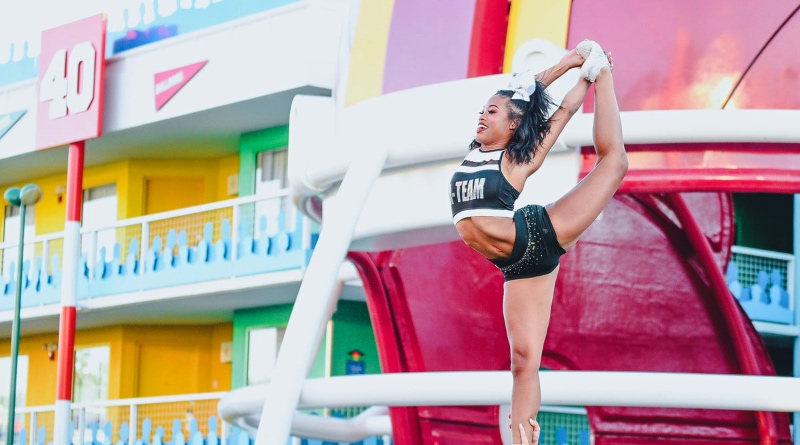Practicing cheerleading is tough, let alone doing so in the middle of summer.
The weather can significantly affect your performance, so it’s important to learn more about it!
The Cheer Kin has listed 6 things you can do to better prepare yourself, or your athletes, for the summer heat.
| This post was created by a guest author. Any information and opinions expressed are solely those of the author and may not reflect our views. Want to be a guest author? Here’s how. |
Consequences of the heat
With hot temperatures and humidity throughout the summer months, I’m sure you notice a decrease in energy from your athletes at practice (or if you are an athlete, practices are probably extra exhausting!).
Since most gyms lack air conditioning (heat is actually good for training in, believe it or not), athletes end up practicing in hot, humid, stagnant air, causing them to put in a lot less effort than usual.
Practices also become less efficient – half the time is spent laying on the floor, taking water breaks and standing in front of the gigantic fans.
While most kids are willing to work tirelessly to get new skills for the upcoming season, it becomes nearly impossible if their bodies aren’t ready to train in a hot, humid environment.
Pushing too hard at practice when not fully ready is likely to cause heat-related illnesses, such as heat cramps, heat exhaustion, and heatstroke.
Symptoms of these include dizziness, headaches, extreme fatigue and nausea/vomiting.
Not the best things to have while trying to get that new tumbling pass!
Prevention
To prevent this, there are many ways in which coaches, athletes and parents can help:
1. Acclimatization
Getting athletes acclimatized to the new environment is one of the most important things to do, if not the most important thing to do, in order to stay healthy and energetic throughout summer training!
Heat acclimatization allows for your body to adapt to the hot, humid weather and be able to tolerate heat during practice. Usually, it takes about 14 days to become fully acclimated.
Specific adaptations include increased water and salt retention by the body, which increases the volume of blood.
This allows the heart to pump a greater amount of blood at a slower heart rate (i.e. less work for the heart).
Athletes who are used to the heat will also sweat more and sweat sooner so they can stay cool.
Perceived exertion (how hard the athlete feels they’re exercising) will decrease as well, allowing them to push harder during practice and get more out of it!
2. Increase fitness before summer
Another important measure to take is increasing the fitness of your athletes before the summer weather kicks in.
Improving their aerobic fitness, especially, will provide some of the same benefits as heat acclimatization does (listed above).
In the month or two leading up to summer, include lots of running and jumping rope at practices.
This will ultimately make summer practices less taxing on the body.
3. Be gradual
During the first week or two of hot weather, gradually increase the duration and intensity of practices.
This will give athletes time to adjust and will decrease the likelihood of exhaustion.
4. Be smart with scheduling
Practicing mid-day, when the sun is at its peak and temperatures are at their highest, is far from ideal.
Instead, schedule practices during morning hours or in the evenings. Training during these times will mean a cooler gym and better practice environment.
You might also like this article: 4 Tips To Help Flyers Gain Confidence In The Air & Nail Their Positions!
5. Allow for cool-down times
Allowing regular water breaks is important for keeping athletes hydrated.
Drinking enough fluids before and after practice is also crucial!
Make sure to turn on multiple fans and open the doors for more air circulation.
6. Wear appropriate clothing
It’s important that athletes wear clothing made of light fabrics that allow for ventilation, cooling and sweat evaporation.
This will lower their body temperature and make them feel less fatigued.
Conclusion
Overall, following the tips listed above will ensure your athletes are well-energized and ready to work during summer practices!
If signs of extreme fatigue, dizziness, nausea or headaches are shown, don’t push the athletes harder – allow them to rest and cool down for a bit before resuming any kind of activity.
Enjoying our articles from The Cheer Kin? Click here to read all other ones, including tryout tips, flexibility, strength training, and more.

